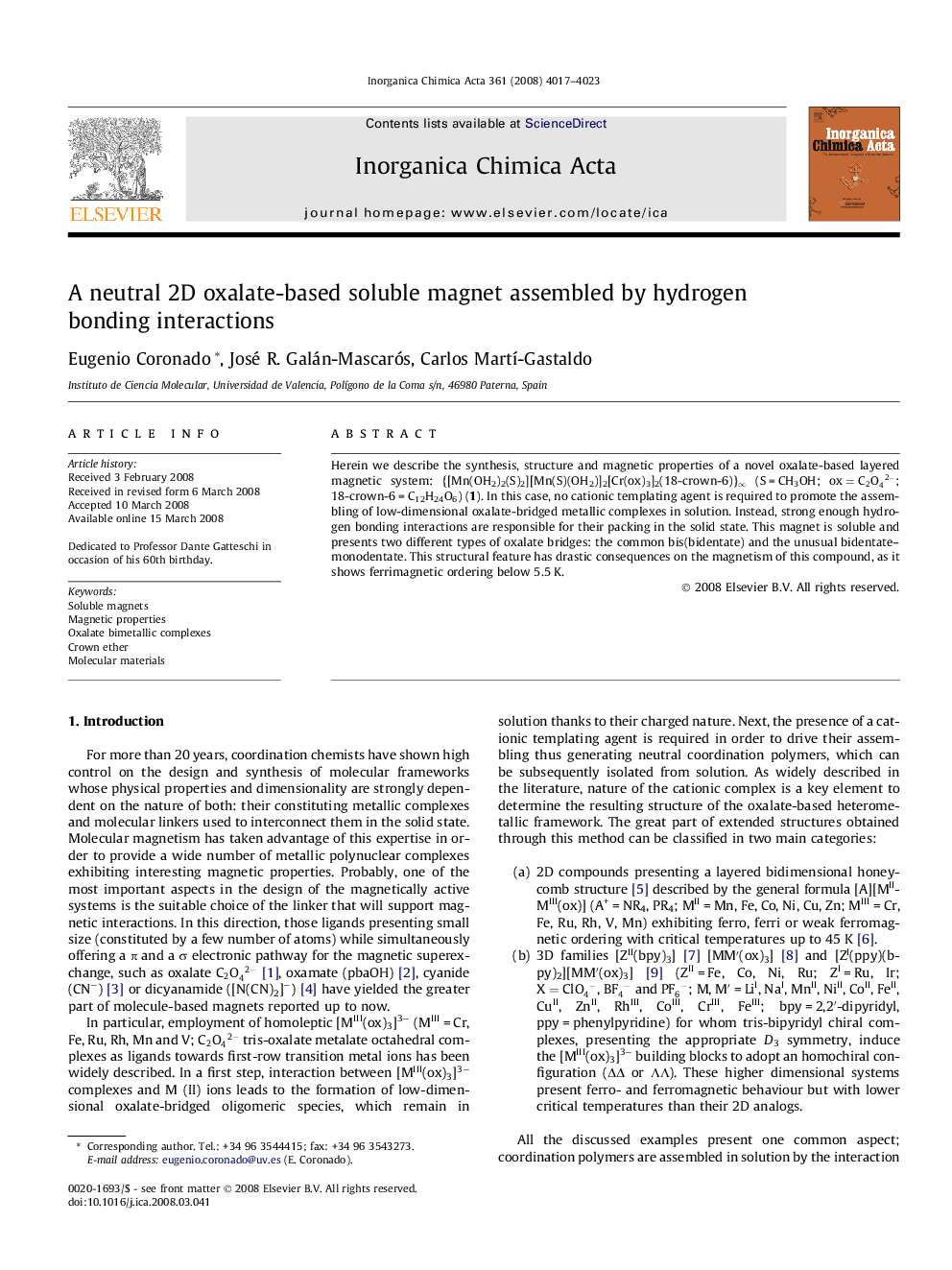| Article ID | Journal | Published Year | Pages | File Type |
|---|---|---|---|---|
| 1311478 | Inorganica Chimica Acta | 2008 | 7 Pages |
Herein we describe the synthesis, structure and magnetic properties of a novel oxalate-based layered magnetic system: {[Mn(OH2)2(S)2][Mn(S)(OH2)]2[Cr(ox)3]2(18-crown-6)}∞ (S = CH3OH; ox=C2O42-; 18-crown-6 = C12H24O6) (1). In this case, no cationic templating agent is required to promote the assembling of low-dimensional oxalate-bridged metallic complexes in solution. Instead, strong enough hydrogen bonding interactions are responsible for their packing in the solid state. This magnet is soluble and presents two different types of oxalate bridges: the common bis(bidentate) and the unusual bidentate–monodentate. This structural feature has drastic consequences on the magnetism of this compound, as it shows ferrimagnetic ordering below 5.5 K.
Graphical abstractWe describe the synthesis and magnetic properties of a novel oxalate-based layered magnetic system: {[Mn(OH2)2(S)2][Mn(S)(OH2)]2[Cr(ox)3]2(18-crown-6)}∞ (S = CH3OH, ox=C2O42-, 18-crown-6 = C12H24O6). In this particular case, no cationic templating agent is required but strong enough hydrogen bonding interactions are responsible for the assembling of oxalate-bridged metallic complexes in the solid state. The existence of two different types of oxalate bridges: the common bis(bidentate) and the unusual simultaneously bidentate-monodentate has important consequences on the magnetism of this compound. Hence, it shows ferrimagnetic ordering below 5.5 K.Figure optionsDownload full-size imageDownload as PowerPoint slide
